In many ways, virtual reality is still like a moon landing plan (meaning it is difficult to achieve).
Facebook acquired Oculus for $2 billion in 2014, making this futuristic product more popular. For the entire industry, the acquisition of the technology giant is a signal that virtual reality has the potential to replicate the success story of mobile phones and become the next computing platform after computers and mobile phones. For the enterprise, this also released a signal to them. They missed the mobile wave and it is time for them to lay out the virtual reality market early.
The irony is (not surprising) that most of the money invested in VR and AR is the failure of the mobile revolution or the loss of its status.
With the embarrassment of the smartphone business, HTC is actively deploying VR as its core business. The former overlord Nokia is also entering the high-end virtual reality camera market. Microsoft's Windows phones have not been successful, and they are now investing more to build the Windows Holographic operating system for the headset.
In the past decade, it has been argued that Intel has failed to take full advantage of the needs and foundations of the mobile revolution in many ways. The decision to stick to the past in terms of system architecture has left Intel behind Qualcomm, Apple and Samsung. Earlier this year, the company announced plans to lay off nearly 12,000 employees and cancel some of the Atom mobile chipset development plans.
Intel's executive director, Brian Kozianik, pointed out that Intel's dilemma is caused by oneself.
"We had hoped that the computing world would stay in the PC era, but the world never stopped innovating. Microsoft's new CEO, Satya Nadella, said very well before. 'Our industry does not respect tradition and only respects innovation.' I think what he said is 100% correct, which is why we miss the mobile wave."
And he believes that Intel's VR project is still in its infancy, but will eventually become Intel's key business.
Intel has been in existence for nearly 50 years, and Kozianik has joined the company since 1982. That year, sci-fi movies like "Electronic World Hegemony" were released one after another, leaving many people to look forward to the future of VR. 2016 can be said to be the first year of VR, but there are still many people who are sarcastic about VR, saying that these efforts are nothing more than the public relations tricks of many willful companies, pretending to be innovative so that they can continue to receive research and development funds.
I have been thinking about these issues all the time. I walked into the Intel headquarters in Santa Clara, Calif., and started an exclusive interview with her virtual reality lab. Researchers at Intel Virtual Reality Labs are currently looking for ways to re-enact our sensory experience in virtual reality to reproduce our sense of hearing, sight and feeling in the real world. Intel's research is also being integrated into Project Alloy, the first head-mounted display device. This is a wireless integrated VR headset, which Intel calls "merged reality."
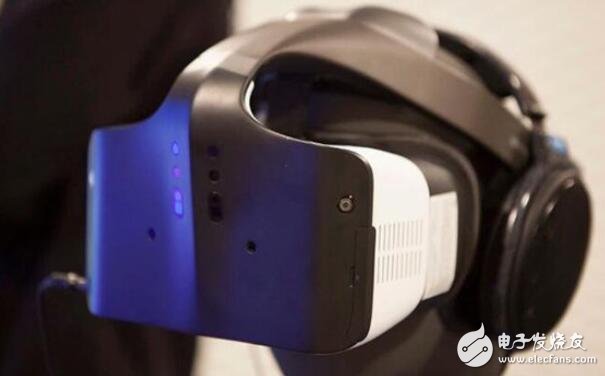
Spell
If Intel is surprised by the development of wireless VR heads, then the new way of interaction called "merged reality" is even more surprising. In terminology, we have heard about virtual reality, augmented reality, mixed reality, real reality, and so on.
I am not saying that we want to include the fusion reality in the dictionary, but the philosophical meaning behind this word is worthy of our deep thought. Converged reality is basically a fusion of VR and computer vision. The latter can provide VR heads with the ability to understand the surrounding environment, including humans, places and objects that are special for the environment. Computer vision is heavily dependent on Intel's computer vision camera RealSense, and Intel has applied RealSense to robots, drones and self-driving cars.
As for the fusion reality, RealSense allows the head-mounted users in the virtual environment to see some of the real world (such as your body and others) through the monitor. Intel hopes that with this technology, users can seamlessly integrate into the magical environment formed by VR and complex physical reality.
laboratory
Intel's Santa Clara campus is a working machine. As I followed Intel's executives and employees through strict security checks and walked through the office space, I could hear engineers constantly clicking and typing on the keyboard.
When I walked into the lab floor, the first thing I noticed was that it was empty. Most of the employees in the lab have been withdrawn and some have even been blocked. The sound of clicking the mouse and tapping the keyboard disappeared. The most advanced 3D acoustic laboratory is located in this area. Intel is here to develop dynamic audio technology for the fused real environment.
The first one to greet me was a robotic arm. Here is where Intel researches hand movements and develops algorithms to help RealSense sensors track and recognize gestures. VR colleagues such as Oculus, HTC, and Sony have introduced motion tracking controllers that allow users to interact with VR content. And Intel hopes to develop better hand tracking technology to make the interaction more seamless.
After bidding farewell to this tireless robotic arm, I came to the sixth floor of the lab where Intel developed the tracking technology from the inside out to create a wireless Project Alloy headline.
Now, most high-end VR heads need to be connected to a PC or host via a cable, which means there is a long cable on the back of the head. The head display also needs to be tracked by an external sensor so that the system can recognize the user's motion.
Instead, Project Alloy heads can use the RealSense sensor array to determine your position based on your relative position to objects in the environment. You don't need to set up any external sensors or drill holes in the wall. You are free to move around without worrying about the effects of the cable.
project
I took a moment to understand this weird headline, with a camera on the front, which Intel used to test the RealSense head tracking feature. Then I am ready to wear the Project Alloy head-up for a personal experience.
I also learned some specifications about this device. Project Alloy is equipped with a DS4 RealSense camera for precise location tracking, the Skylake chipset for application processing, and finally Intel Intel Atom for computer vision.
Although it is still under development, the next generation (named "Alloy 2"" will be equipped with the new RealSense 400 camera and will be upgraded to the Kaby Lake processor. But the most interesting thing is that the head display Will abandon the use of the Atom processor, and instead use Movidius's VPU (Visual Processing Unit). Xiaobian has previously reported that Intel acquired the company.
After some time, I re-adjusted this extremely comfortable head display to balance it on our heads. Although I only experienced 15 minutes, Project Alloy left a deep impression on me.
For a company that develops chipsets for high-end PCs, it seems like a natural plan to build a head-end that needs to connect to high-end PCs.
Some places are still rough, but there are also very good places. Overall, this is a different VR device. The internal and external tracking technology in the prototype is very effective. But the accuracy of the DS4 RealSense camera is not very satisfactory. As the resolution of depth cameras increases, next-generation models will enable more accurate tracking, and all image details will become clearer.
Ultimately, the device experience that OEMs will introduce next year will be even more critical. Intel quickly pointed out that they are not good at making consumer hardware, they are more focused on combining things to show the underlying technology.
TIm Parker, an Intel executive, told me about the demo: "Intel is more focused on hardware and experience, but we are not known for its imagination in making physical devices."
Although Intel will work with Microsoft and other partners to improve its performance, Alloy 2 will eventually be used as a reference design. Intel has no plans to enter the consumer product hardware business in the near future, but Koziannik hopes that this technology will be used to integrate Intel's technology into the DNA of the next generation of VR devices.
He said: "In the middle of next year, we will complete Alloy, open source. That is our goal. You open source these things, so that everyone can continue to improve on this basis, a bit like the original Microsoft PC business."
What makes me curious is how Intel will incorporate this technology into the connected reality experience. It is worth mentioning that Intel claims to have established a strong connection with wired VR through desktop chips. And many of the Intel executives I spoke to seem to be deliberately downplaying the wireless nature of Project Alloy. In fact, these executives often direct conversations back to wired VR.
Kozianik said: "We can free you from the cable, because we put all the computing devices in the head display, we can achieve all the mapping. But if you really want to be a low Time-delayed high-end gaming devices, then (wired VR) will always be the system of choice."
The important decision Intel has to make is whether the convergence of real-world technology is worth investing in making dedicated VR chips. For a company that develops chipsets for high-end PCs, it seems like a natural plan to build a head-end that needs to connect to high-end PCs. Parker did not directly comment on whether they would develop a dedicated VR chip.
Vision
The only thing I can think of during the experience is Intel. Alloy is just an internal development tool in Intel's mind, but due to the existence of RealSense and Movidius, Intel has many directions to choose from.
I sat down with RealSense and Movidius executives several times, and I realized that Intel's virtual reality and augmented reality plans have become clearer.
In a slightly narrow room, Achin Bhowmilk, associate director of the Perceptual CompuTIng Lab, showed me the advanced demo of the latest RealSense model in a fused reality environment.
He said: "Our idea for this product is to create the ability to perceive and understand the world."
This system is a far cry from the RealSense technology I have experienced on my PC. The original RealSense was a bit bad. As a new way of human-computer interaction, the products recommended to consumers are very cumbersome, and the PC input system is obviously not ready.
With virtual reality, RealSense has a computing platform that is more capable of exploiting its computer vision agility. Koziannik told me that he hopes that this technology will one day be able to identify people from the contact list while you are walking, and then display appropriate notifications in your field of vision.
Kozianik said: "RealSense first appeared in our lab. We have been thinking about how the mouse and keyboard are used over and over again for 20 years. How did they become the way we interact with computers? So we thought, maybe We can free people's hands from the mouse and keyboard. Then we saw the rise of VR last year and began to realize that you are somewhat limited by these methods."
Intel is more focused on hardware and experience, but we are not known for its imagination in making physical devices.
— TIm Parker, an Intel executive
RealSense brings space and context awareness to heads-up, while Alloy provides hardware manufacturers with a more convenient reference to integrate tracking technology into their products. The truth is that many of the manufacturers of the display have already started using Intel's technology, and the chips they use come from Movidius, which was acquired by Intel.

When it comes to buying computer vision processing equipment, Movidius' low-power Myriad 2 vision processing unit has become the industry standard. Movidius is an early partner of Google's Project Tango smartphone AR system, and they also announced that they will work with Lenovo to develop VR devices. As Intel hopes to integrate RealSense technology into more devices, the ubiquitous Myriad 2 will definitely give Intel a bigger advantage.
RealSense and Movidius will undoubtedly become more and more close, but Kozianik insists that although both parties hope that the two products can be more closely integrated, Movidius will still be sold as a standalone product.
Koziannik said: "We will continue to optimize the architecture of Movidius, and we will do things to find out how this architecture can be better integrated or connected with Intel architecture."
Movidius executive director Remi El-Ouazzane also believes that his products will be more optimized for the RealSense platform.
He said: "Now many people don't know (Movidius platform), but I think this situation will change, I think we need to work with Intel to develop a competitive advantage, so that the whole is bigger than the sum of the parts."
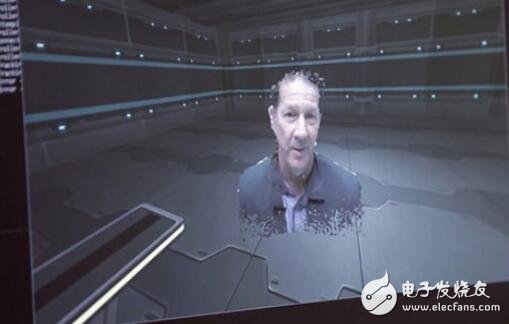
future
Many of the biggest supporters of virtual reality simply see virtual reality as a continuation of augmented reality, and Intel seems to be interested in how VR will eventually evolve into AR.
Augmented reality is an exciting area. Developers are now able to access the Microsoft HoloLens heads, and despite the delay, the Meta 2 development kit will begin shipping. But for some manufacturers who are advertised, we still lack enough information.
Magic Leap has raised nearly $1.4 billion in investments from investors including Google and Alibaba, but has yet to show much information about its upcoming prototype. Although some sources said that Apple is currently developing multiple "mixed reality" prototypes based on different display technologies, Apple has not yet given an official response.
However, most of the headlines have one thing in common: using the Vvid of Movidius. El-Ouazzane said: "I will be very modest to say that all large AR platforms are using Movidius."
He also pointed out that by integrating computing devices into a pocket size, Movidius technology can help its partners miniaturize headsets in augmented reality systems. He believes that this pocket-sized form factor can help improve the receiving capabilities of the device.
El-Ouazzane explained: "We should learn from the past. The weight of AR glasses needs to be between 25 grams and 30 grams, and it is quite interesting to wear. AR glasses should use electronic components as little as possible, only visual processing. Devices, display components and computing devices, everything can be in the pocket, just like a smartphone."
Although Kozianik emphasized in our dialogue that the industry "will take one to two years to acquire the optical technology needed to augment reality," he hinted that Intel has "various R&D" in the AR field.
Converging reality can narrow the gap between VR and AR, which is a fascinating adventure. Project Alloy is an early adventure with shortcomings, and Intel clearly has laid a solid foundation for it, including continuing to develop computer vision and visual processing technologies to enable more powerful augmented reality devices and experiences.
Intel is not in a hurry. Both Movidius and RealSense are not fully integrated into the VR/AR headline. These two technologies also focus on other more pressing technology platforms, such as self-driving cars, security systems and drones. Project Alloy and Fusion Reality point Intel to clear product and product categories, and can begin to build their own efforts across a broader range of VR and AR.
Predicting what the next computing platform is, or distinguishing between short-lived fashion and emerging technologies that represent the future is never an accurate science, but Intel understands the risks with AR/VR, and they are also working on layouts to make sure they don't miss out. "reality".
Headphone speaker:
Headphone speaker is a king of speaker unit which is used for headphone, it also called headphone driver. These speakers have high sound pressure level, fast frequency response, wide frequency response range and low distortion. Headphone speakers are mainly used for voice headphone (e.g. customer service phone, call center headphone, military intercom headset- ) and music headphone (e.g. Bluetooth headphone, sport headphone, game headphone-).
Our main headphone speakers include:
1) From the diameter, we have speakers in 23mm ~ 57mm.
2) From the impedance, we have speakers of 32ohm/150ohm/300ohm/1000ohm.
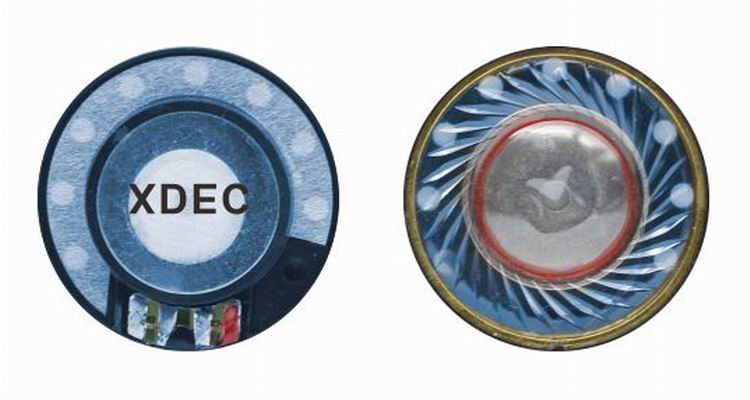
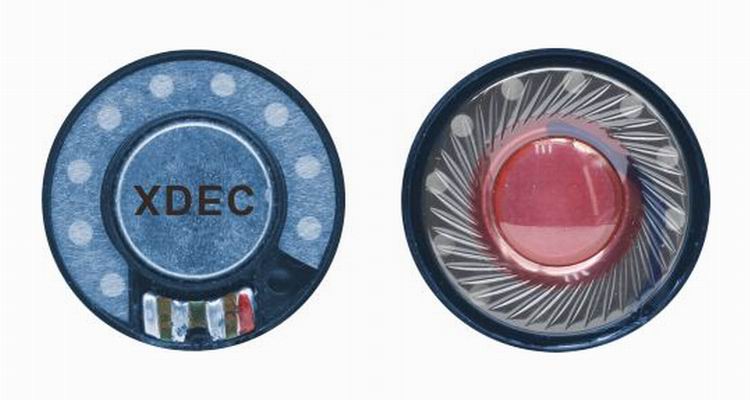
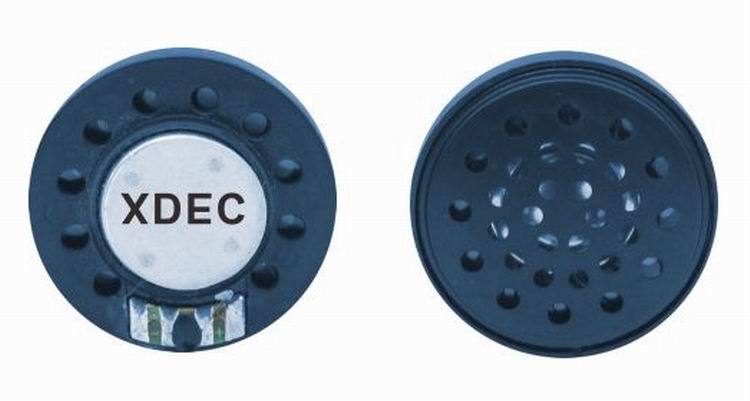
FAQ
Q1. What
is the MOQ?
XDEC: 2000pcs for one model.
Q2. What is the delivery lead time?
XDEC: 15 days for normal orders, 10 days for urgent orders.
Q3. What are the payment methods?
XDEC: T/T, PayPal, Western Union, Money Gram.
Q4. Can you offer samples for testing?
XDEC: Yes, we offer free samples.
Q5. How soon can you send samples?
XDEC: We can send samples in 3-5 days.
Headphone Speaker,Headset Speaker,Earphone Speaker,Headphone Parts Speaker
Shenzhen Xuanda Electronics Co., Ltd. , https://www.xdecspeaker.com